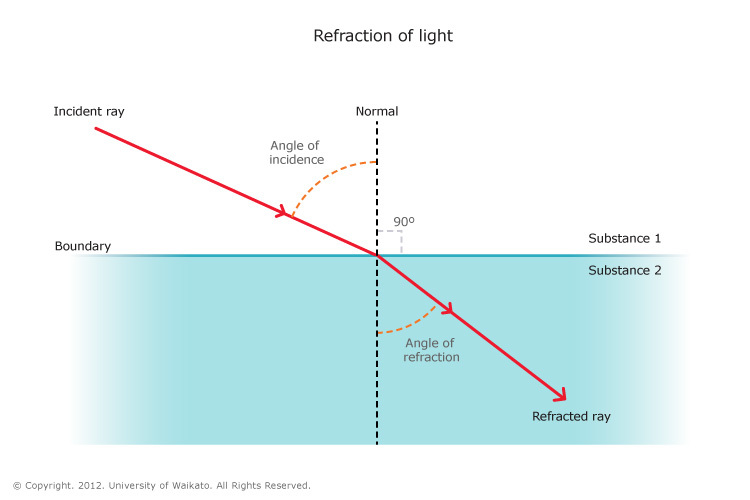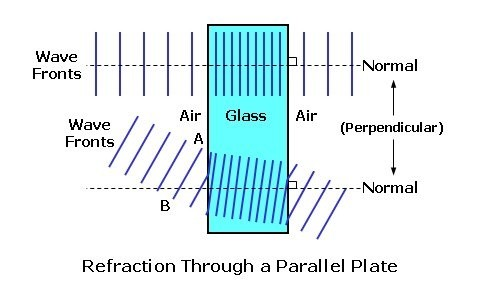Properties of Electromagnetic Waves Part 1
Properties
Electromagnetic waves, or EM waves, can be absorbed, transmitted, refracted or reflected by different objects. These objects will do this differently for different wavelengths of the EM spectrum.
Refraction
The speed of light changes when it meets a different substance. When this occurs, the lights bend and this is called refraction. Light travels slower the denser the medium it travels through.
Notice the different labels on the diagram.
Normal = The normal line is a the dotted line that is perpendicular (right angles) to the boundary between the two substances. Always draw this line if you need to draw refraction.
The angles of incidence and refraction are made between the light ray and the normal.
When light slows down it bends towards the normal. When light speeds up it bends away from the normal.
Ray Diagrams
Sometimes you will need to use a wave front diagram.
A wave front is shown by the vertical lines. These indicate the same position of the wave at every wave, for example it could always be showing the crest of the trough of the wave.
If the wave hits the new substance at right angles, no refraction takes place. The wave still slows down, but no refraction. This only occurs when the wave meets the boundary at an angle.
- Is it true that only visible light and ultraviolet light can refract?
- Your answer should include: No / False
- Will refraction occur if a wave meets a boundary at 90o?
- No
- What is the normal line?
- Your answer should include: Line / Meets / Boundary / Right / Angle / Angles

